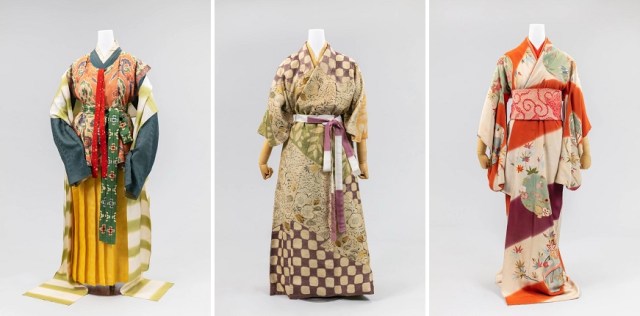
Stunning and bold, this exhibition is a rare treat for kimono lovers.
The history of traditional Japanese women’s clothing has one culturally important piece at its core: kimono. A robe-like garment in an elegant shape, the kimono has dazzled many with its intricate patterns as well as the delicate sewing skills required to create such gorgeous pieces. Now in Tokyo’s Shibuya neighborhood, a rare exhibition will unfold, featuring the 1,500 year history of traditional Japanese women’s clothing with a focus on kimono dyeing techniques.
To celebrate the advent of its 80th anniversary since its establishment, the Kyoto Dyeing and Weaving Cultural Association will be collaborating with the Shibuya-based Bunka Gakuen Costume Museum, which has a long-running history of displaying garments of traditional import from a multitude of diverse cultures, to hold this exhibition. The exhibition will highlight women’s clothing and cloth dyeing techniques from the Kofun period, around 300 to 538 AD, to the contemporary era, and we are sure those who love the historical as well as fans of kimono will have much to glean from this installation.
▼ Nara Period (710 to 794 AD)
▼ Muromachi Period (1336 to 1573)
▼ Edo Period (1603 to 1867)
In terms of how the exhibition is laid out, it’ll be spread through two floors of the Bunka Gakuen Costume Museum. The second floor will host recreated clothing from the Kofun period up until the Meiji period (1868 to 1912). Placed on mannequins, patrons can observe the change in women’s clothing over the eras while leisurely walking through the exhibit.
For the first floor, however, museum goers will be able to observe kimono from the Bunka Gakuen Costume Museum’s own collection with authentic pieces from the Meiji period to kimono made in more recent years. While we can’t say necessarily say this exhibition will be entirely nostalgic, given the centuries of clothing trends contained, we know for sure folks will definitely appreciate seeing the history of traditional Japanese garments for women unfold before them.
▼ Kimono on the first floor will be displayed on racks similar to these gorgeous pieces shown below.
Last but not least, this exhibition has a special meaning for the Kyoto Dyeing and Weaving Cultural Association. From the 1930s to the 1950s the same association held parades displaying traditional women clothing made with various kimono dyeing techniques, and this culturally significant event was titled Senshoku Matsuri, or literally “Dyeing and Weaving Festival.” Though this festival is no longer held today, the Shibuya exhibit, in a way, is temporarily reviving what was once a yearly celebration in Japan’s former capital.
▼ Preserved photos of the now discontinued Senshoku Matsuri. The second photo specifically displays regalia from the Nara period.
The exhibit will open its doors from July 15 until September 28. Tickets are 500 yen (US$4.50) for regular admission, 300 yen for university and high school students, and 200 yen for middle and elementary school students. Folks with a physical disability and an accompanying individual have free admission. As a COVID-19 preventative measure, visitors may be staggered upon entry depending on foot traffic. Furthermore, the exhibit will also be offering a lecture and workshop series in Japanese on kimono sewing and dyeing techniques, which can be signed up for here.
Museum information
Bunka Gakuen Costume Museum / 文化学園服飾博物館
Address: Tokyo-to, Shibuya-ku, Yoyogi 3-22-7 Shinjuku Bunka Quint Building 1st floor
東京都渋谷区代々木3-22-7 新宿文化クイントビル 1階
Open 10 a.m.-4:30 p.m.
Closed Sundays, holidays, and from August 7 to August 17
Website
Source: Japaaan, @Press
Images: @Press
● Want to hear about SoraNews24’s latest articles as soon as they’re published? Follow us on Facebook and Twitter!
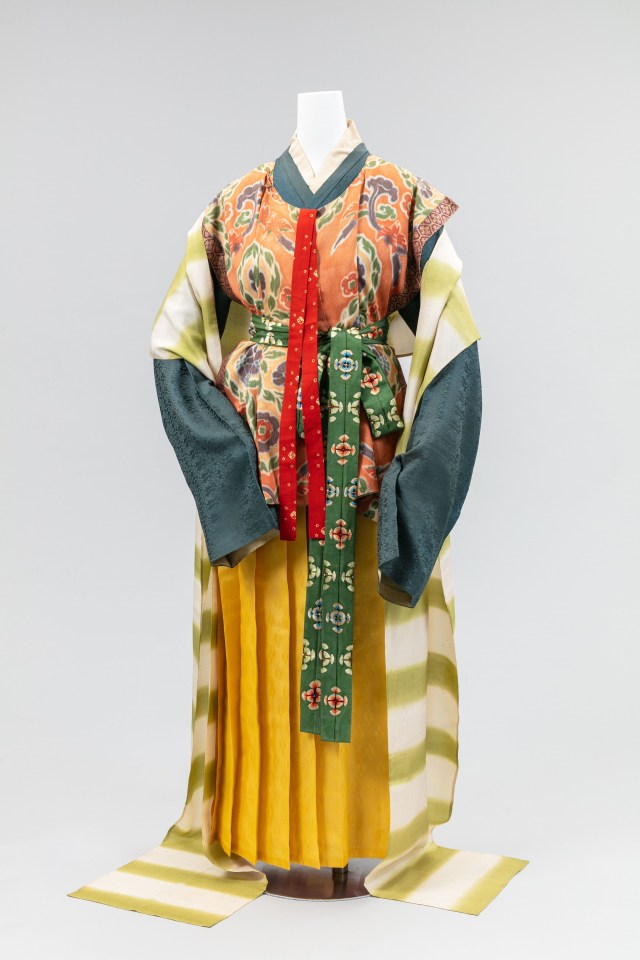
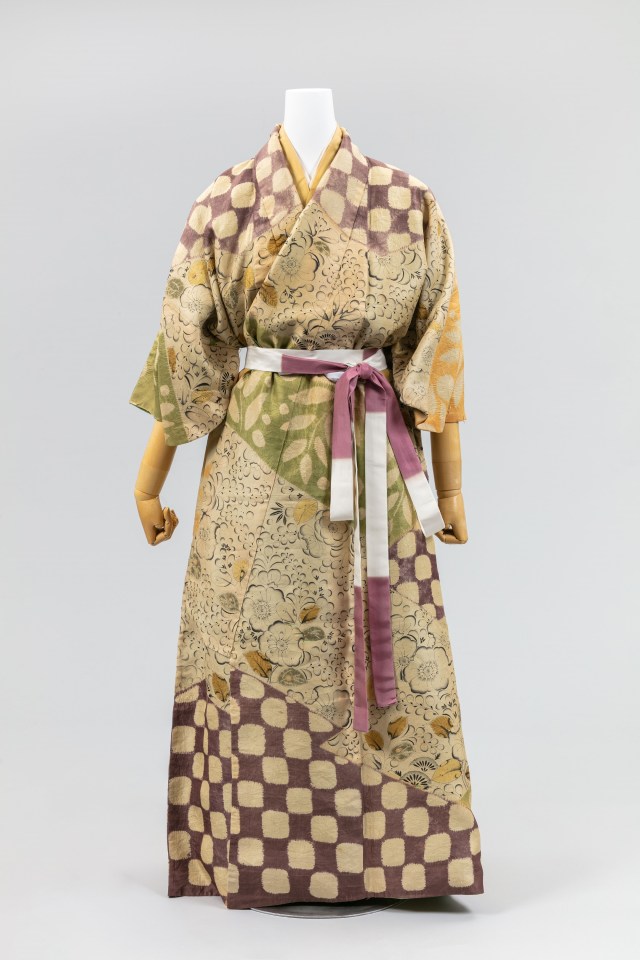
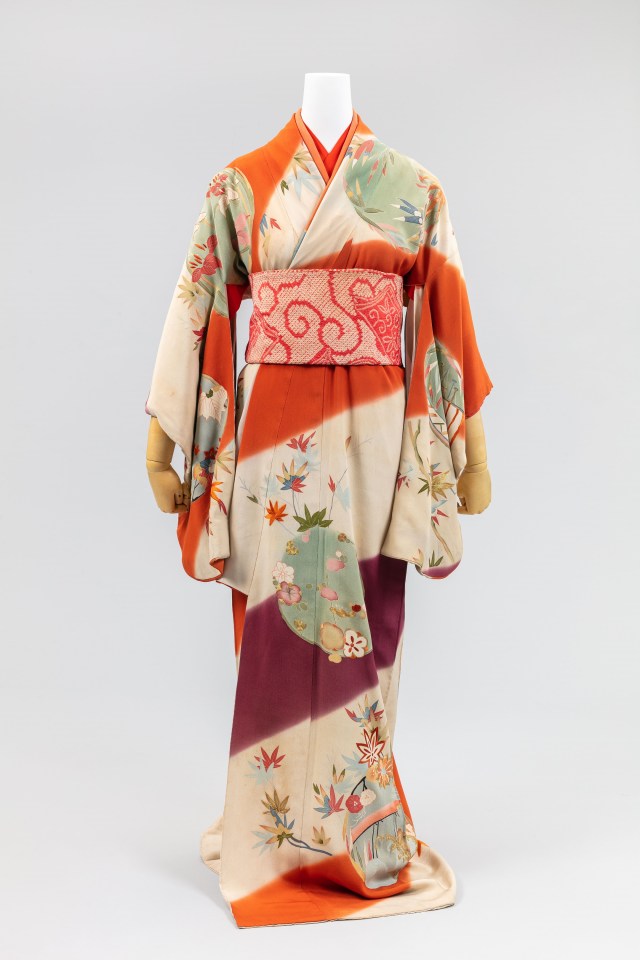
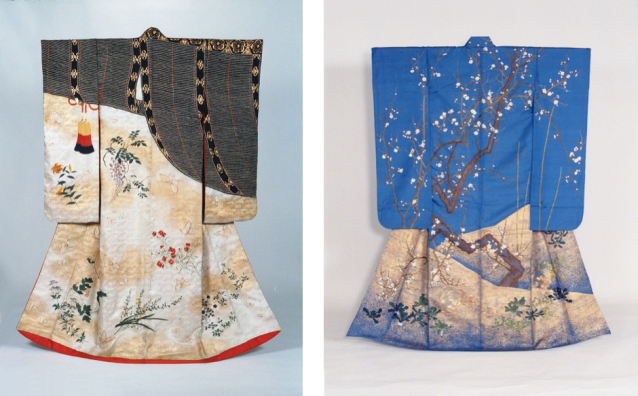
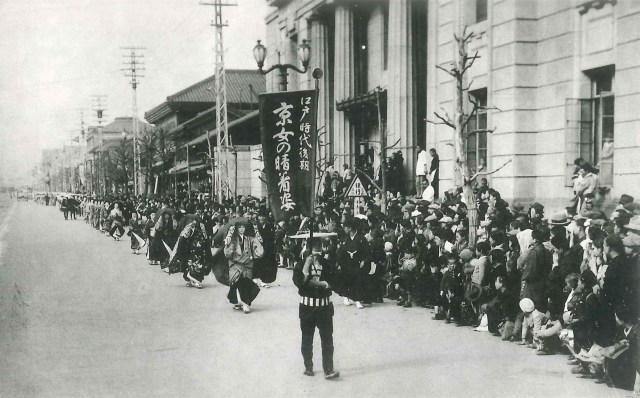
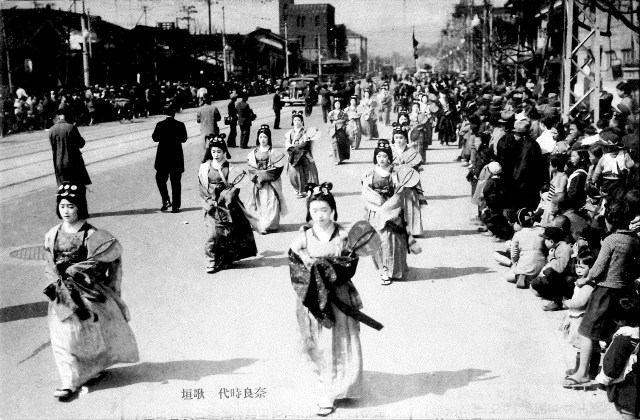
 Does a denim kimono look or feel good? Our kimono neophyte reporter finds out【Photos】
Does a denim kimono look or feel good? Our kimono neophyte reporter finds out【Photos】 New documentary reveals the world of Japanese denim【Video】
New documentary reveals the world of Japanese denim【Video】 Samurai parkas for men feature traditional washi Japanese paper details
Samurai parkas for men feature traditional washi Japanese paper details Appreciate thousands of years of Japanese beauty in surreal video from Nara University【Video】
Appreciate thousands of years of Japanese beauty in surreal video from Nara University【Video】 Dress like an aristocrat from the Nara period at new costume rental shop in Nara【Photos】
Dress like an aristocrat from the Nara period at new costume rental shop in Nara【Photos】 Japan’s new difficult-to-drink-from beer glass protects your liver, but it’s a brutal experience
Japan’s new difficult-to-drink-from beer glass protects your liver, but it’s a brutal experience How to order snacks on a Shinkansen bullet train in Japan
How to order snacks on a Shinkansen bullet train in Japan New samurai glasses are Japan’s latest weird must-have souvenir
New samurai glasses are Japan’s latest weird must-have souvenir “Deflowering” services for virgin women are now a thing in Japan, apparently
“Deflowering” services for virgin women are now a thing in Japan, apparently Doraemon found buried at sea as scene from 1993 anime becomes real life【Photos】
Doraemon found buried at sea as scene from 1993 anime becomes real life【Photos】 Burger King Japan suddenly adds Dr. Pepper and Dr. Pepper floats to its menu nationwide
Burger King Japan suddenly adds Dr. Pepper and Dr. Pepper floats to its menu nationwide Hello, cosmetics! Clinique teams up with Hello Kitty this summer for first-time collaboration
Hello, cosmetics! Clinique teams up with Hello Kitty this summer for first-time collaboration Princesses, fruits, and blacksmiths: Study reveals the 30 most unusual family names in Japan
Princesses, fruits, and blacksmiths: Study reveals the 30 most unusual family names in Japan High-fashion Totoro cuddle purse is like an elegant stroll in the forest【Photos】
High-fashion Totoro cuddle purse is like an elegant stroll in the forest【Photos】 Demon Slayer: Kimetsu no Yaiba gets new roller coaster attractions and food at Universal Studios Japan
Demon Slayer: Kimetsu no Yaiba gets new roller coaster attractions and food at Universal Studios Japan Nintendo history you can feel – Super NES, N64, and GameCube controllers become capsule toys
Nintendo history you can feel – Super NES, N64, and GameCube controllers become capsule toys “The most Delicious Cup Noodle in history” – Japan’s French Cup Noodle wins our heart【Taste test】
“The most Delicious Cup Noodle in history” – Japan’s French Cup Noodle wins our heart【Taste test】 Starbucks releases a cute Frappuccino and Unicorn Cake…but not in Japan
Starbucks releases a cute Frappuccino and Unicorn Cake…but not in Japan Kyoto Tower mascot termination reveals dark side behind cute Japanese characters
Kyoto Tower mascot termination reveals dark side behind cute Japanese characters McDonald’s Japan’s Soft Twist Tower: A phantom ice cream only sold at select branches
McDonald’s Japan’s Soft Twist Tower: A phantom ice cream only sold at select branches Yabai Ramen: What makes this Japanese ramen so dangerous?
Yabai Ramen: What makes this Japanese ramen so dangerous? Finally! Nintendo Japan expands Switch 8-bit controller sales to everybody, Online member or not
Finally! Nintendo Japan expands Switch 8-bit controller sales to everybody, Online member or not Japanese government wants to build luxury resorts in all national parks for foreign tourists
Japanese government wants to build luxury resorts in all national parks for foreign tourists To combat declining birth rate, Japan to begin offering “Breeding Visas” to foreigners
To combat declining birth rate, Japan to begin offering “Breeding Visas” to foreigners 10 things you should buy at 7-Eleven in Japan
10 things you should buy at 7-Eleven in Japan Studio Ghibli releases anime heroine cosplay dresses that are super comfy to wear
Studio Ghibli releases anime heroine cosplay dresses that are super comfy to wear Woman charged for driving suitcase without a license in Osaka
Woman charged for driving suitcase without a license in Osaka Studio Ghibli unveils My Neighbour Totoro miniature house model
Studio Ghibli unveils My Neighbour Totoro miniature house model Kyoto experiencing problems with foreign tourists not paying for bus fares, but not on purpose
Kyoto experiencing problems with foreign tourists not paying for bus fares, but not on purpose Fighting mild hunger with a Japanese soda that turns into jelly in the stomach【Taste test】
Fighting mild hunger with a Japanese soda that turns into jelly in the stomach【Taste test】 Studio Ghibli’s Howl’s Moving Castle tapestry unveiled in Japan for first time
Studio Ghibli’s Howl’s Moving Castle tapestry unveiled in Japan for first time McDonald’s new Happy Meals offer up cute and practical Sanrio lifestyle goods
McDonald’s new Happy Meals offer up cute and practical Sanrio lifestyle goods Sales of Japan’s most convenient train ticket/shopping payment cards suspended indefinitely
Sales of Japan’s most convenient train ticket/shopping payment cards suspended indefinitely Sold-out Studio Ghibli desktop humidifiers are back so Totoro can help you through the dry season
Sold-out Studio Ghibli desktop humidifiers are back so Totoro can help you through the dry season Japanese government to make first change to romanization spelling rules since the 1950s
Japanese government to make first change to romanization spelling rules since the 1950s Foreigner’s request for help in Tokyo makes us sad for the state of society
Foreigner’s request for help in Tokyo makes us sad for the state of society Ghibli founders Toshio Suzuki and Hayao Miyazaki contribute to Japanese whisky Totoro label design
Ghibli founders Toshio Suzuki and Hayao Miyazaki contribute to Japanese whisky Totoro label design Tokyo’s most famous Starbucks is closed
Tokyo’s most famous Starbucks is closed Let beautiful Japanese patterns bloom in your shoes with these insoles from REGALERIA!
Let beautiful Japanese patterns bloom in your shoes with these insoles from REGALERIA! Kimono rental shops in Kyoto and Nara offer Japanese-style hijabs to buy or rent
Kimono rental shops in Kyoto and Nara offer Japanese-style hijabs to buy or rent Country kimono! Project completes set of over 200 designs for every nation at Tokyo Olympics【Pics】
Country kimono! Project completes set of over 200 designs for every nation at Tokyo Olympics【Pics】 Tokyo retro kimono photography service provides customers with gorgeous snapshots of the past
Tokyo retro kimono photography service provides customers with gorgeous snapshots of the past Beautiful line of Kimono Pouches let you add traditional Japanese style to any outfit
Beautiful line of Kimono Pouches let you add traditional Japanese style to any outfit Gorgeous drinking bottles using kimono fabric now available with new designs and we want them all
Gorgeous drinking bottles using kimono fabric now available with new designs and we want them all Kyoto kimono fabric Sailor Moon wallet would look as good in Japan’s old capital or Crystal Tokyo
Kyoto kimono fabric Sailor Moon wallet would look as good in Japan’s old capital or Crystal Tokyo Art Aquarium Ginza offers a captivating new way to enjoy the cherry blossoms–with goldfish!
Art Aquarium Ginza offers a captivating new way to enjoy the cherry blossoms–with goldfish! New magazine focused on modern and casual kimono styles launched this month
New magazine focused on modern and casual kimono styles launched this month Eurovision winner criticized for Japanese cultural appropriation by everyone except the Japanese
Eurovision winner criticized for Japanese cultural appropriation by everyone except the Japanese Real-life Rurouni Kenshin reverse-blade katana now on display in Tokyo【Photos】
Real-life Rurouni Kenshin reverse-blade katana now on display in Tokyo【Photos】 Camp like a samurai with the new Outdoor Kimono from Japanese apparel brand Snow Peak
Camp like a samurai with the new Outdoor Kimono from Japanese apparel brand Snow Peak Neo Kimono releases innovatively traditional heel covers made from artisanal fabric
Neo Kimono releases innovatively traditional heel covers made from artisanal fabric Embrace the literary and the historical with traditional Japanese artwork as your Zoom background
Embrace the literary and the historical with traditional Japanese artwork as your Zoom background Even Spirited Away’s Yubaba wants you to wear a mask for coronavirus safety
Even Spirited Away’s Yubaba wants you to wear a mask for coronavirus safety
Leave a Reply